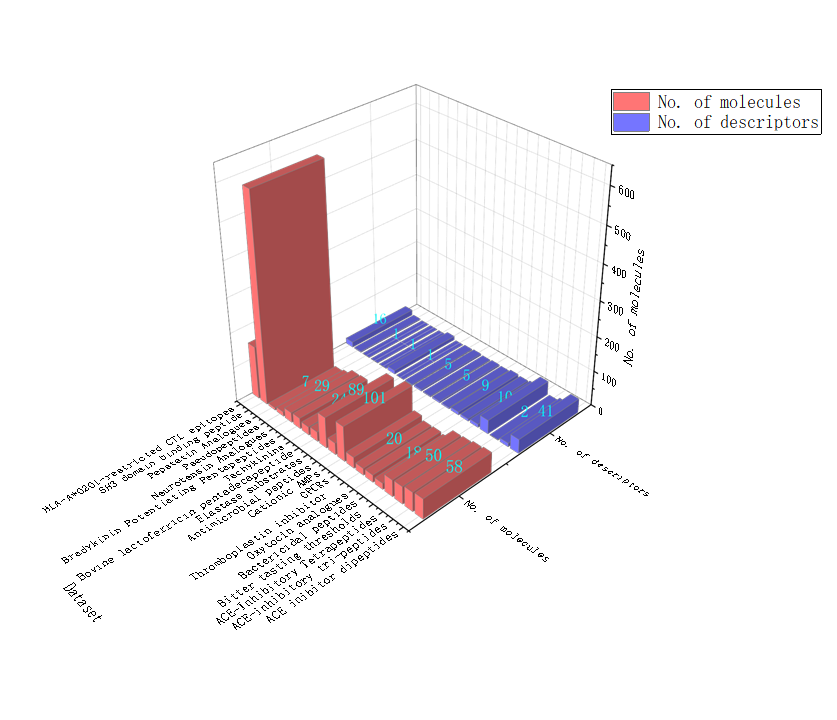Note:Click search to find all peptide QSAR models
What is a QSAR model ?
- QSAR(Quantitative structure–activity relationship) refers to the structure-activity relationship of a specified quantity, which uses a mathematical model to describe the relationship between the molecular structure and a certain biological activity of the molecule.
- The model in this database is based on the characterization of active peptides by amino acid descriptors and is called peptide QSAR.
- Modeling methods
partial least squares coupled with genetic algorithm-variable selection (GA-PLS)
support vector machine (SVM)
immune neural network (INN)
Gaussian process (GP)
principal component regression (PCR)
segmented principal component regression (SPCR)
segmented partial least squares (SPLS)
multiple linear regression (MLR)
MR-PLS ==Stepwise multiple regressions (SMR) is employed in partial least squares
artificial neural network (ANN)
Orthogonal signal correction (OSC)
linear discriminant analysis (LDA), and regression methods (LMR)
quadratic PLS (QPLS)
genetic partial least squares (GPLS)
genetic algorithm-partial least square (GA-PLS)
back-propagation artificial neural network (BP ANN)
- A summary of QASR model in the database
- A 3D statistical graph

The pie chart was made according to peptide datasets used in QSAR model, and the legend shows name of each peptide dataset. It can be seen that ACE inhibitory Dipeptides has been used with the highest frequency.

For peptide datasets in our database, the 3D graph shows the number of active peptides contained in each peptide dataset and amino acid descriptors used to characterize the peptide structures.